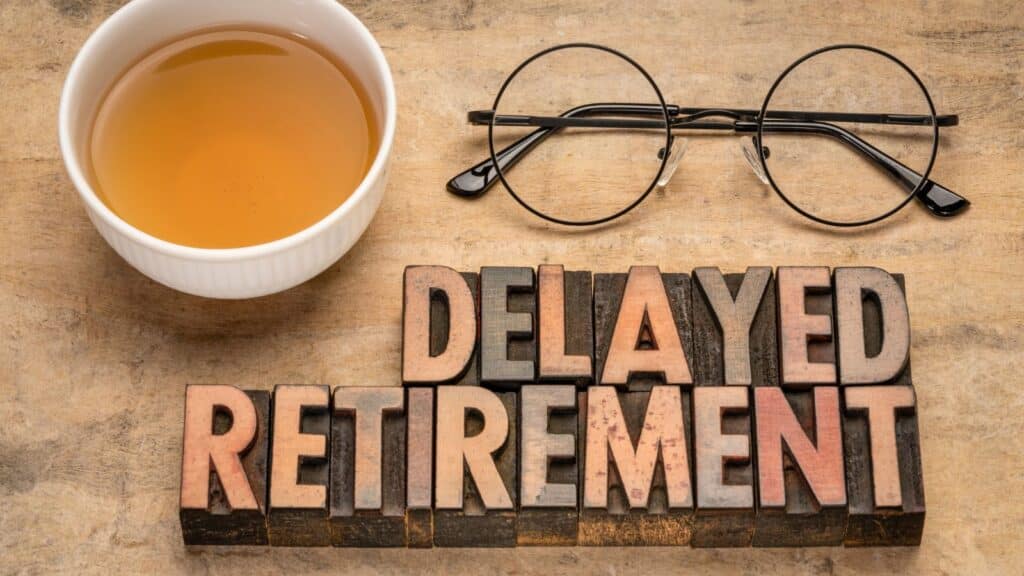
Saving for retirement is crucial if you want to live your later years comfortably and financially secure. Investing in your future can, however, be an overwhelming experience as you try to balance the financial pressures of everyday life with looking ahead to the future. We want to reassure you that planning for your retirement does not have to be daunting. According to financial experts, this article will help you understand the key steps you need to take to feel confident about your retirement savings.
The Importance of Saving

Retirement shouldn’t mean compromising on your quality of life. Savings allow you to continue enjoying activities you love, whether traveling, pursuing hobbies, or simply relaxing without financial constraints. Knowing you have a nest egg reduces stress and lets you enter retirement with peace of mind. You can focus on enjoying your golden years without financial worries looming over you.
How Much You Should Have Saved by Age

Financial advisors often suggest benchmarks to serve as a loose guideline. While individual circumstances vary, these numbers provide a starting point:
By 30: Aim to have an amount equal to your current annual salary saved. By 40: Three times your annual salary. By 50: Six times your annual salary. By 60: Eight times your annual salary. By 67: Ideally, strive for ten times your annual salary. These are general markers. Lifestyle, potential inheritance, health issues, and family circumstances can influence your needs.
How To Estimate Your Retirement Expenses

Estimating your retirement expenses is crucial in planning a secure and comfortable experience once you finish work. Factors to consider include:
Activity Level: Consider how much you want to travel and what hobbies or volunteering opportunities you want to consider. There will be many free or cheap options in your local areas, but if you plan to travel further afield or require expensive equipment, this must be factored into your expenses. Living Situation: Some retirees downsize to reduce their cost of living, but others choose to move to a better area, which may require investment. You should factor in housing costs, property taxes, and potential maintenance needs on whatever home you choose to retire in. Healthcare: Healthcare costs often rise with age. It is essential to consider potential medical needs and insurance coverage options, especially if you have a diagnosed health condition.
Track your Current Spending

Once you know how you will live out your retirement years, the next step is to gauge your current spending. You should analyze your budget by monitoring your spending habits for a few months to understand your baseline expenses for housing, food, transportation, and utilities. When considering the future, you must consider inflation, around 3%. Tracking your spending may seem tedious, but it can shine a light on how much you’re spending so you can accurately predict your future spending. Additionally, you may see areas where you could be spending more and start to save more than you currently do.
Future Income Sources

Planning for retirement involves diligently saving and understanding the various income streams you can tap into during this time. These may include Social Security benefits, a pension plan or 401(k), and any anticipated income from part-time work or investments. You may also have annuities, insurance products that offer guaranteed income for a set period or throughout your lifetime.
Shortfall Analysis

Once you have a realistic idea of your retirement expenses and income sources, you can compare the two. You must adjust your savings plan to bridge the gap if there’s a gap. A retirement savings shortfall occurs when the projected amount you’ll have saved for retirement falls short of the estimated sum you’ll need to maintain your desired lifestyle after you stop working. One of the biggest reasons for shortfalls is starting to save too late, as the earlier you start saving, the more time your money has to grow through compound interest. Other reasons for shortfalls include unexpected events, early retirement, and a rise in the cost of living.
Catch-Up Contributions

Discovering a retirement savings shortfall can be unsettling, but it doesn’t have to derail your dreams of a secure future. If you’re 50 or older, the IRS allows you to make additional “catch-up” contributions to your retirement accounts. This can significantly accelerate your savings growth.
Increase 401(k) Percentage

Another option is to analyze your budget and see where to cut back on discretionary spending to free up more money for retirement savings via your 401(k). Aim to increase your contribution percentage to your 401(k) for as long as necessary to cover any shortfall. Start by increasing your contribution by a small percentage, 1% or 2%, every few months. This gradual approach can make it easier to adjust your budget and minimize the impact on your take-home pay.
Make the Most of Bonuses

When you receive a raise or bonus, allocate a portion towards increasing your 401(k) contribution. This way, you’ll likely not feel a significant change in your lifestyle while significantly boosting your retirement savings.
Adjust Investment Strategy

Investing in stocks, shares, and bonds is another common way people prepare for retirement. As you approach retirement or discover a potential shortfall in your savings, it’s crucial to reevaluate your investment strategy to ensure it aligns with your changing needs and risk tolerance. Risk tolerance often decreases closer to retirement. You might be less comfortable with significant market fluctuations that could erode your nest egg.
Moderate Risk Investments

Index Funds can passively track a particular market index, offering broad diversification and lower fees than actively managed funds. They generally provide consistent, long-term growth with moderate risk. Alternatively, Target-Date Funds: “Set-it-and-forget-it” options that automatically adjust their asset allocation (mix of stocks, bonds, and cash equivalents) as the target retirement date approaches, becoming more conservative over time.
Asset Allocation

Asset allocation refers to the distribution of your investments across different asset classes, such as stocks, bonds, and cash equivalents. As you near retirement, consider increasing your bond allocation, as bonds generally offer lower returns but less volatility than stocks. A higher bond allocation can provide stability and income in retirement, which may enable you to reduce your exposure to stocks and mitigate potential losses close to retirement.
Income-Producing Investments

It is never too late to start if you have yet to enter the world of investments. Consider incorporating regular income investments, such as dividend-paying stocks or bonds. These can supplement your income in retirement, with varying levels of risk.
Tax Implications

Understanding the tax treatment of your retirement accounts is crucial. Contributions to traditional 401(k)s and IRAs are typically tax-deductible, but withdrawals in retirement are taxed as ordinary income. Roth IRAs and 401(k)s (if available) operate differently – contributions are not tax-deductible, but qualified withdrawals in retirement are generally tax-free. Profits from selling investments held for more than one year are subject to capital gains taxes. The tax rate depends on your income tax bracket and the type of asset sold. Dividends, payments made by companies to their shareholders, can also be taxed but will vary depending on whether they are qualified or unqualified.
Minimizing Your Tax Burden

To reduce the tax you must pay, consider investments with lower tax implications, such as tax-exempt municipal bonds or index funds with lower turnover. If you have a traditional IRA and expect to be in a lower tax bracket in retirement, consider converting some or all of your funds to a Roth IRA. While there can be tax implications during the conversion year, qualified withdrawals from a Roth IRA in retirement are generally tax-free.
Delay Retirement

If you have evaluated your investment strategy and your tax burden and a shortfall is still on the cards, consider delaying your retirement. Working a few extra years allows you to make additional contributions and benefit from compounded growth for extended periods. Even a slight delay can significantly improve your retirement outlook.
Part-Time Work in Retirement

If staying in your job is too stressful, you can still retire, but taking on a less demanding part-time job is okay. Transitioning to part-time work after officially retiring can supplement your income and provide and boost your retirement finances. Working in later life also offers health benefits, especially as you can maintain regular social interaction.
Regular Reviews are Essential

Life throws curveballs. Job changes, marriage, children, healthcare needs, and even unexpected inheritances can all impact your retirement goals and financial situation. Regularly reviewing your plan ensures it stays aligned with your evolving circumstances. Regular reviews also allow you to assess the performance of your investments and adjust your asset allocation if needed. This helps mitigate risk and ensure your portfolio remains on track to meet your retirement goals.
Hire a Financial Advisor

There are many online resources to help you assess and manage your retirement finances, but you may want to hire a professional. A financial advisor can help you evaluate your situation, create a personalized retirement income plan, and recommend suitable investment strategies.
Minimizing Risk

Generally, younger individuals have a longer time horizon until retirement. They can afford more risk in their investment portfolio for higher growth. As you approach retirement, you might need to shift towards a more conservative approach to prioritize capital preservation. The safest way to minimize risk is to diversify your investment portfolio across asset classes like stocks, bonds, and cash equivalents. This helps mitigate risk because when one asset class experiences a downturn, others might perform better, minimizing overall losses.
Focus on Long Term Growth

When considering retirement savings, it is easy to think of ways to make money quickly. However, while aiming for some growth to outpace inflation is okay, you should prioritize investments with a stable, long-term growth history. Playing the waiting game over chasing high-risk, high-reward options that might lead to significant losses is more suitable for the risk-averse.
The Best Investment Options

Here’s a summary of some standard retirement investment options, categorized by risk profile: Low Risk-Bonds– Certificates of Deposits (that offer a fixed interest rate for a predetermined period) and Money Market Accounts (similar to a high-interest savings account). Moderate Risk Investments–Target Date Funds and Index Funds. High Risk Investments-Individual stock, Sector Funds (investing in industry), and Real Estate Investment Trusts (REITs).
Avoiding Scams

Unfortunately, scammers target individuals who are saving for retirement. You should take care when exploring any investment opportunities and be wary of unsolicited investment offers. Offering promising high returns with little risk is usually a red flag, so take the time to research what has been offered to you. Always research any investment opportunity thoroughly before committing your money, and, where possible, use a financial advisor.




